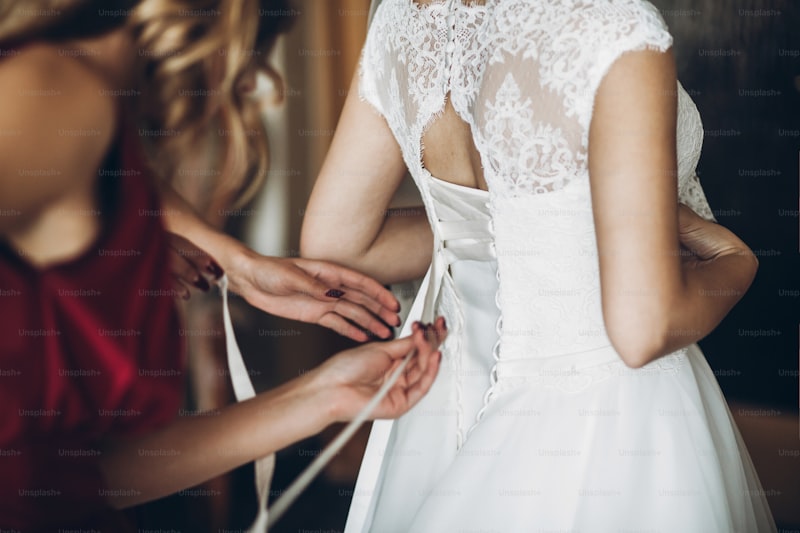Essential Tips for Customizing Your Wedding Dress Fit
Essential Tips for Customizing Your Wedding Dress Fit
Your wedding day is one of the most significant moments in life, and your wedding dress is a vital part of it. A well-fitted dress can enhance your appearance, boost your confidence, and ensure you feel beautiful as you walk down the aisle. However, customizing your wedding dress fit requires thoughtful consideration and expert advice. In this article, we will dive into essential tips for customizing your wedding dress fit, ensuring that you look your best on your big day.
Understanding the Basics of Dress Fit
Before customization, it’s essential to understand how a wedding dress should fit. Here are some key aspects:
- Bust Fit: The bodice should fit snugly around the bust without causing discomfort.
- Waist Fit: The dress should highlight your waist, giving you an hourglass figure.
- Length: The hem of the dress should complement your height and the type of shoes you will wear.
- Overall Comfort: You should be able to sit, dance, and move comfortably in the dress.
Measurement Techniques
Accurate measurements are the cornerstone of a perfect fit. Here’s a step-by-step guide to take your measurements:
| Measurement | How to Measure |
| Bust | Wrap the measuring tape around the fullest part of your bust. |
| Waist | Measure around the narrowest part of your waist. |
| Hips | Measure around the fullest part of your hips. |
| Length | Measure from the top of your shoulder down to where you want the hem to hit. |
It's advisable to have someone help you with these measurements to ensure accuracy. Remember to wear the undergarments you plan to wear on your wedding day, as they can affect the fit.
Choosing the Right Designer or Seamstress
Selecting an experienced designer or seamstress is crucial for customizing your wedding dress. Here are some attributes to consider:
- Experience: Look for someone who specializes in bridal wear and has a portfolio of previous work.
- References: Ask for recommendations from friends or check online reviews.
- Consultation: Schedule a consultation to discuss your vision and gauge their understanding of your needs.
Understanding Your Body Shape
Your body shape will influence how a wedding dress fits. Different silhouettes flatter different body types. Here are some common body shapes and suitable dress styles:
| Body Shape | Flattering Styles |
| Apple | Empire waist, A-line dresses |
| Pear | Ball gown, A-line dresses |
| Hourglass | Mermaid, fitted dresses |
| Rectangle | Sheath, A-line dresses |
Understanding your body shape will help you communicate your preferences effectively to your designer or seamstress.
Incorporating Customization Techniques
There are various ways to customize your wedding dress for the perfect fit:
- Letting Out or Taking In: If the dress is too tight or loose, your seamstress can adjust the seams for a better fit.
- Altering the Length: Make sure the length is appropriate for your shoes and height. Heels can significantly change the dress’s appearance.
- Add Nuances: Consider adding built-in padding for support, or customizing sleeves, straps, and necklines for a personalized touch.
Timing Your Alterations
Timing is essential when it comes to alterations. Here are some guidelines:
- Initial Fitting: Schedule your first fitting at least 2 to 4 months before your wedding. This allows time for multiple fittings if needed.
- Final Fitting: Aim for your final fitting 1 to 2 weeks before the wedding. This is when final adjustments can be made.
Considering the Fabric
The fabric of your wedding dress can influence how it drapes and fits. Here are some popular fabrics and their characteristics:
| Fabric | Characteristics |
| Satin | Luxurious, smooth, can be heavy, offers structure |
| Lace | Delicate, can create a romantic look, requires careful handling |
| Chiffon | Light and flowy, ideal for soft draping |
| Tulle | Stiff and airy, often used for skirts |
Consult with your seamstress about how different fabrics may affect the fit and alterations. A fabric's properties can alter your overall comfort on your wedding day.
Testing the Fit During Dress Rehearsals
Consider organizing a dress rehearsal to test how the dress fits in action. Here are some tips:
- Move Around: Walk, sit, and dance in your dress to ensure it stays comfortable throughout different activities.
- Test Accessories: Wear your chosen shoes and jewelry for a complete look.
Final Touches
Once you are satisfied with the fit, you can think about pinpointing the final touches:
- Bridesmaid Dresses: If they have similar styles and are custom-fitted as well, they can enhance your overall aesthetic.
- Veil and Accessories: Make sure your veil, hairpieces, and jewelry complement the dress and are also comfortable.
Common Questions
Some common questions brides have about customizing wedding dress fit include:
- How much can I expect to spend on alterations? Costs for alterations typically range from $150 to $500 depending on complexity.
- How many fittings will I need? Most brides need between two to three fittings.
- What should I bring to my fittings? Bring your wedding shoes, undergarments, and any accessories you want to pair with the dress.
Conclusion
Customizing your wedding dress fit is a personalized journey that requires thoughtful planning, accurate measurements, and significant communication with your designer or seamstress. By understanding your body shape, choosing the right fabric, and timing your alterations appropriately, you can ensure your wedding dress fits like a glove. Remember to include your final touches and test your dress in motion to affirm its comfort level. Take the time to enjoy every step of this process, as it is just one of many joyful parts of planning your wedding!

